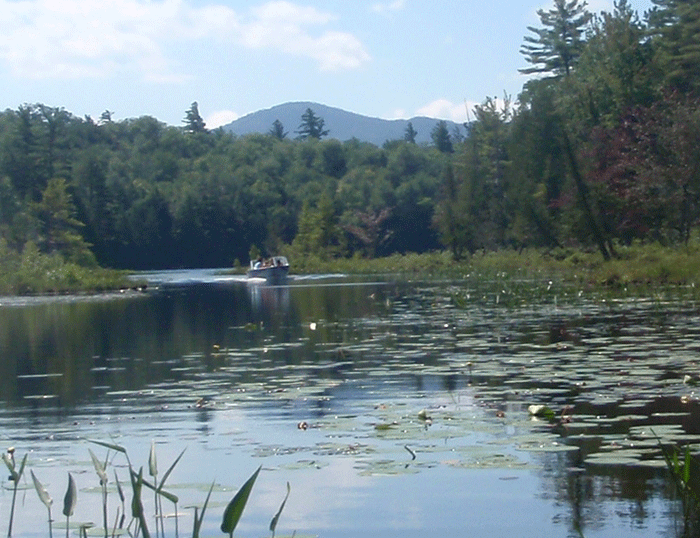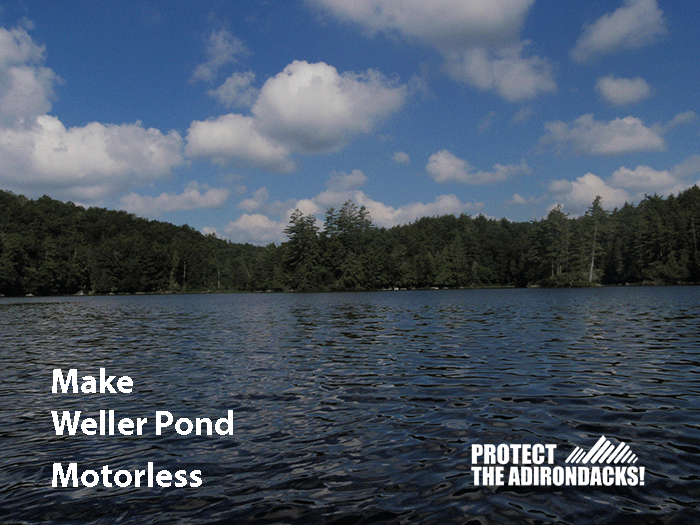
Weller Pond is part of the Saranac Lakes system. It is connected with a navigable channel from Middle Saranac Lake that leads to Weller Pond and Little Weller Pond. It’s a remote corner of what is a heavily used lake system with heavy motorboat use. A motorless Weller Pond would provide a refuge from heavy motorboat traffic that dominates the Saranac Lakes.
It is even more critical in our fast-paced life for us to escape the noise, speed and smell of roaring engines. It is good for all of us to have places for refuge and silence, places where we can observe native species and intact ecosystems and enjoy an overnight camping experience. Such wild places grow fewer each year.
It’s important that people have accessible wild places. The Adirondack Park offers great opportunities for hiking in wild places, where the longer one hikes the more remote the country one can access, but opportunities to do this by boat are limited. For many, canoe or kayak access is how they get to wild places and enjoy Wilderness. Greater opportunities are needed for motorless waters where people can canoe for a day or overnight trip.
Few Motorless Lakes Opportunities in the Adirondack Park: It’s important to note that most of the major lakes are open to all manner of motorized watercraft. A report published by Protect the Adirondacks in 2013 The Myth of Quiet, Motor-free Waters in the Adirondack Park found that of the 100 largest lakes in the Adirondacks, from Lake Champlain to Beaver Lake (in Watson and Webb in western Adirondacks), 77 are open for all manner of motorized boating and floatplanes, 14 lakes are privately owned and provide no public access, and just 8 are motor-free. Boreas Ponds, which was recently purchased by the State of New York for addition to the Forest Preserve, and is number 95 among the Park’s biggest lakes at 338.9 acres, is currently being reviewed for management and classification by state agencies and may be added to the motorless list.
Of the eight motor-free lakes among the Park’s top 100, just five are relatively easy to access and motor-free. Just 17 of the biggest 200 lakes are easily accessible and motor-free. The demand is high for motor-free experiences, but the supply is low. This needs to change. The public deserves greater opportunities for motor-free waters across the Adirondack Park.
If Weller Pond was a stand-alone lake and not assessed in its size as part of Middle Saranac Lake it would be 180 acres and number 155 as far as largest lakes in the Adirondacks.
Why Can’t We Make Just 2% of the Saranac Lakes Chain Motorless?
The Saranac Lakes are open season for all types of motorboats and jetskis, which have free reign over all waters. When we look across the Saranac Lakes Chain, from Lake Flower to the Saranac River to Upper Saranac Lake, the area totals over 9,000 acres of open waters. Weller Pond and Little Weller Pond are just 190 acres – just 2% of the waters of the Saranac Lakes Chain. Why can’t we set aside 2% of these waters as a motorless area?
State Has Authority to Make Weller Pond Motorless: The DEC has the authority to make Weller Pond motorless because the state owns the entire shoreline and controls all access points. There are no residual rights associated with Weller Pond that would complicate or undermine motorless management.
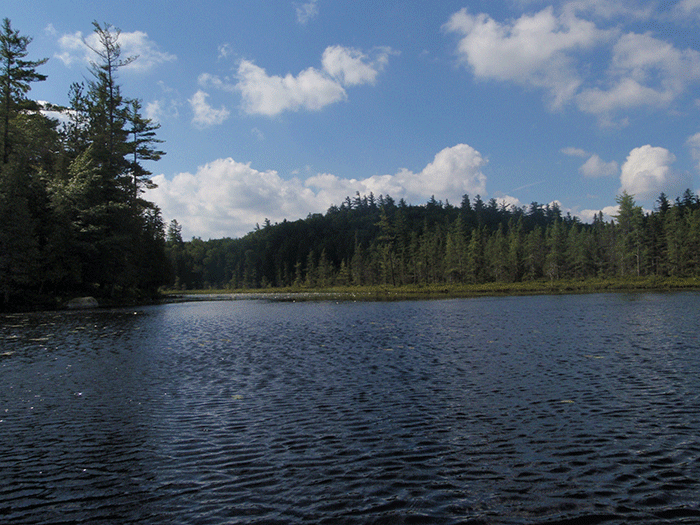
Another view of Weller Pond.
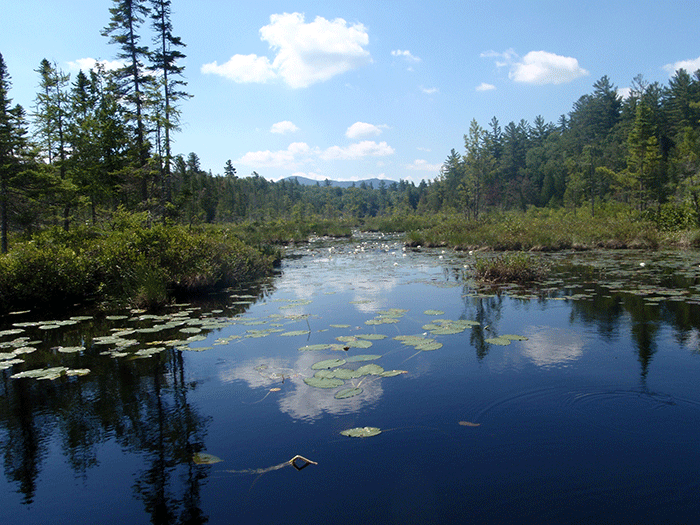
A part of the navigable channel between Middle Saranac Lake and Weller Pond.
Effective Management Opportunity Exists: The administration of a motorless Weller Pond is manageable because there is only one entrance point — the 1,000 foot channel from Middle Saranac Lake. A sign stating that no motor boats are allowed could be placed at the entrance to the channel and a short distance into the channel. The DEC campsite reservation system could be changed to state that the four campsites on Weller Pond are available only for motorized watercraft. DEC could also advertise the motorless state on its website.
Quiet and Solitude: Several dozen canoes and kayaks can be in simultaneous use on a motor-free lake or pond, such as Lake Lila or Round Lake, and the experience remains one of tranquility. Put several dozen motorboats on one such lake and the experience is dominated by the buzz of engines, surge of boat waves, and smell of gasoline.
In the Adirondack Park’s Forest Preserve, lands designated Wild Forest include over 100,000 more acres than lands designated Wilderness. Wilderness lands should be equal to Wild Forest. For all the reasons detailed in this report there needs to be many more opportunities for easily accessible motor-free waters in the Adirondacks for people to enjoy.
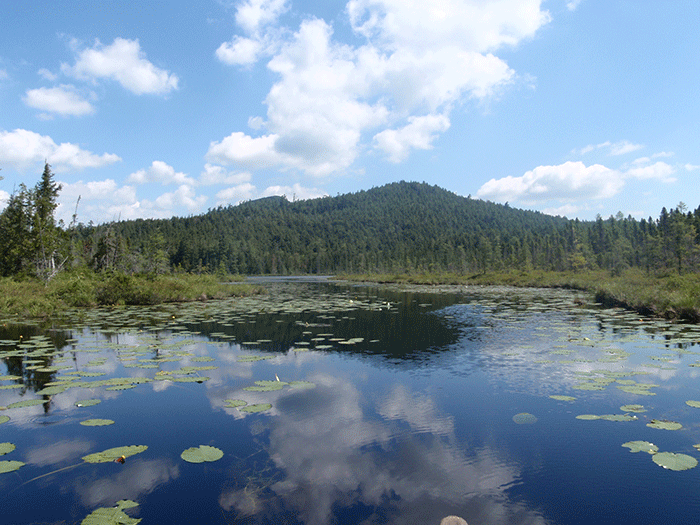
Beautiful Little Weller Pond. This is the channel near the entrance to Little Weller Pond. This extraordinary and picturesque small pond would also benefit from the motorless protections for Weller Pond.
Little Weller Pond Would also Benefit from Motorless Protections: If Weller Pond was made motorless the stunning Little Weller Pond would also receive motorless protections. This small, though stunning pond, is reached by a very small channel from the channel that connects Weller to Middle Saranac Lake. Little Weller Pond is one of the most dramatically beautiful small lakes in the Adirondack Park.
NYSDEC Description of Weller Pond: The description in the NYSDEC Saranac Lake Wild Forest Unit Management Plan describes this way (Appendix 6): “Weller Pond (180 acres) is connected to the north end Middle Saranac Lake by an easily navigable 1000-foot-long channel. A lean-to and several primitive camping sites make this island studded pond a popular stopping point for overnight and day-use recreationists. Paddlers utilize a 0.85-mile portage trail that begins on the north end of the pond to reach Saginaw Bay on Upper Saranac Lake. Weller Pond’s fish community is indistinguishable from nearby Middle Saranac Lake and has changed little since 1929 when biologists reported northern pike, smallmouth bass, yellow perch and pumpkinseed. A 1975 survey added largemouth bass and golden shiner showed up in a 1984 ALSC netting. Weller Pond has a maximum depth of 21 feet and a mean depth of 9.5 feet with a flushing rate of 1.1 times per year. Like other members of the Saranac chain of lakes, it has good water chemistry with a pH of 6.64, ANC of 74.5 μeq/l and specific conductivity of 30.4 μmhos. The littoral zone of Weller Pond has a variety of substrates ranging from boulder to organic matter. When that factor is combined with the uneven depth structure of the lake and its variety of islands, points and drop-offs, Weller Pond provides anglers an interesting fishing experience. Weller Pond will be managed as a warmwater pond to preserve its native fish in the presence of non-native species.”
Submit Your Public Comment to Make Weller Pond Motorless by August 11th
Steve Guglielmi, Forester
P.O. Box 296
1115 State Route 86
Ray Brook, NY 12997-0296
r5.ump@dec.ny.gov

